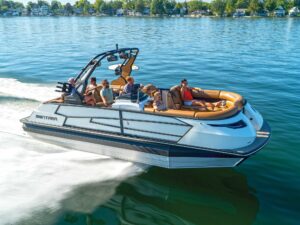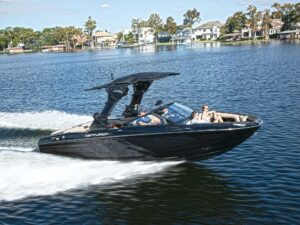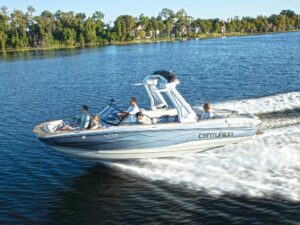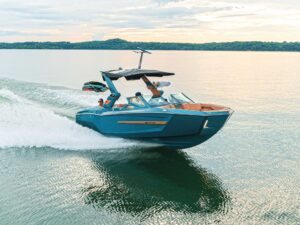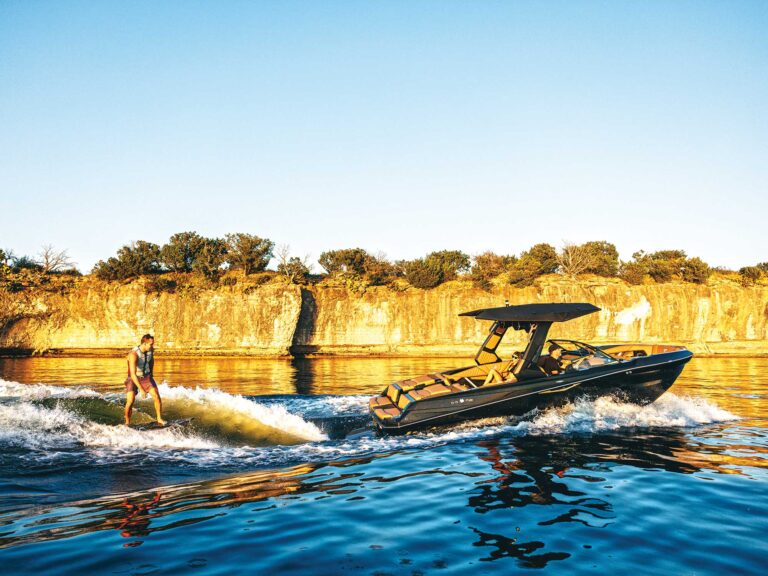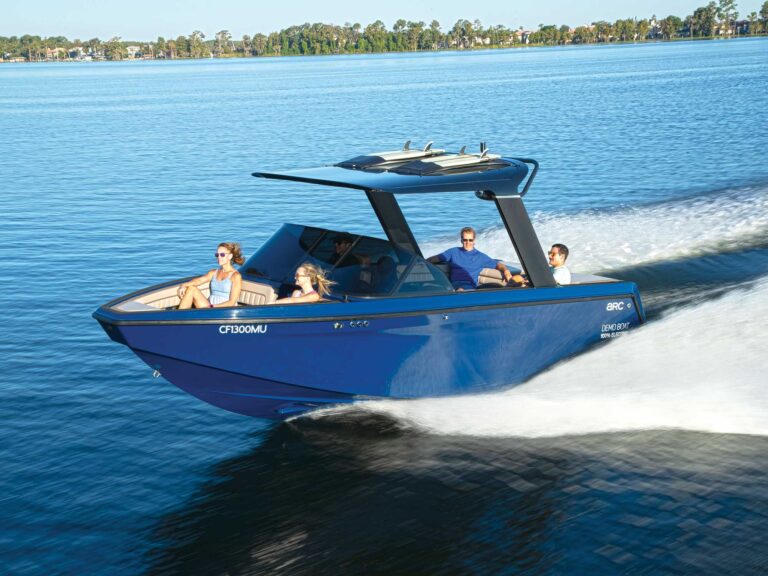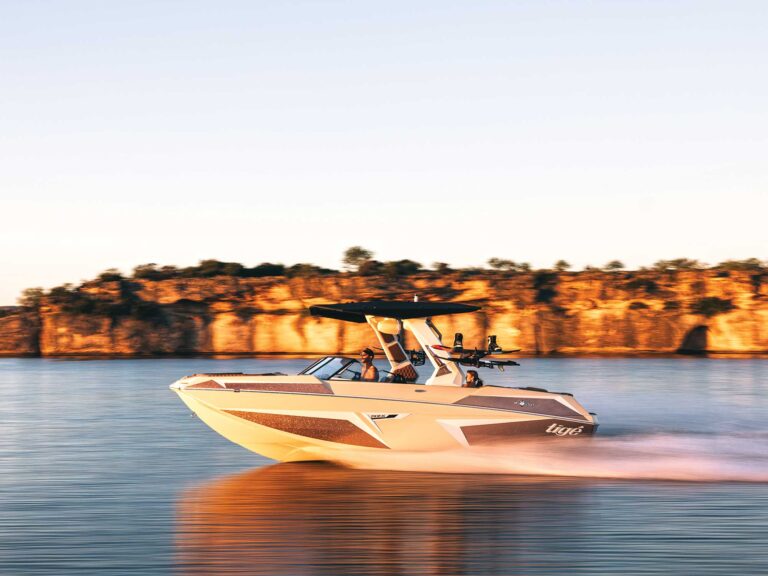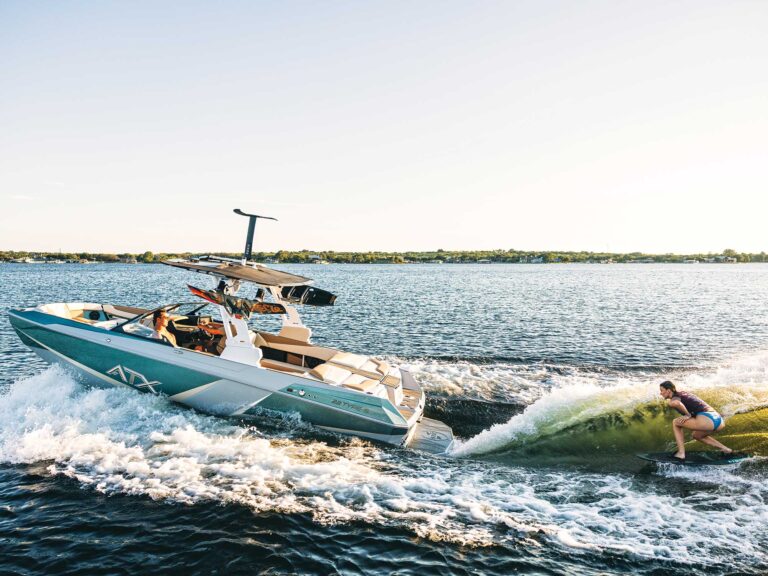
No company has more diesel outboards than OXE Marine from Sweden, with five horsepower ratings, including 125, 150, 175, 200 and 300 hp.
Each features a horizontally mounted engine, versus the vertically oriented powerheads specially designed for most outboards (Seven Marine being a notable exception).
“A horizontally mounted engine offers inherently better lubrication and, as a result, a longer operating life,” says Pim Pelosi, chief marketing officer for OXE. Though the outboards are available to recreational boaters through a network of US dealers, the company is focusing on commercial fishing, law enforcement, rescue, military and towing, which demand long-term durability and are less price-sensitive.
The 125 to 200 hp models utilize inline four-cylinder 2.0-liter turbo-charged diesel engines, while the 300 model sports an inline six-cylinder 3.0-liter turbocharged diesel powerplant from BMW. All come with closed-cooling systems, which help reduce corrosion issues, and electronic power steering. Each model complies with the federal EPA Tier III standards for diesel emissions.
OXE outboards have no lower-unit gears. “Instead, there is a large gear box directly under the engine,” Pelosi explains. Forward and reverse gears are always engaged to help prevent gear breakage when quick shifting, he adds. The engines use a hydraulic clutch. To transfer power to the prop shaft, OXE outboards employ a carbon-fiber pulley belt system that isolates the gear box from shock loading.
The 300 has a 180-amp alternator; other models pump out 130 amps. For comparison, the alternator in Yamaha’s F300 outboard produces a maximum of 70 amps. “The OXE 300 alternator can power hydraulics, pumps, and even an air-conditioning system,” Pelosi points out.
A key advantage is torque. “The 300 generates 600 foot-pounds of torque,” Pelosi says. “That’s twice the torque of a comparable 300 hp gasoline-powered outboard.”
The OXE engines are also efficient, Pelosi says. “The engines burn 40 percent less fuel than comparable gasoline engines,” he claims.
The retail price? We found a 2020 OXE 300 advertised for $60,822. Compare that to an advertised price of $25,553 for a Yamaha F300. Quite a difference, but Pelosi contends that the OXE will have paid for the difference with fuel savings at the 500-hour point.
OXE engines are hefty. The 25-inch version of the 300 tips the scales at 871 pounds, which is nearly 37 percent heavier than the 551-pound Yamaha F300, and 31 percent heavier than the 600-pound Mercury Verado 300. Not all boats can accept so much extra weight, so be mindful if you’re considering one of these Swedish oxen for your pride and joy.
Finally, an OXE will not likely offer the top speed of a comparable gasoline outboard, Pelosi acknowledges, due to the extra weight. “The gas outboard will probably be faster,” he says. But for the buyers of OXE outboards, be they heavy commercial users or long-range cruisers, the benefits of extra torque and greater fuel efficiency far outweigh the quest for speed. To learn more, visit oxemarine.com.

